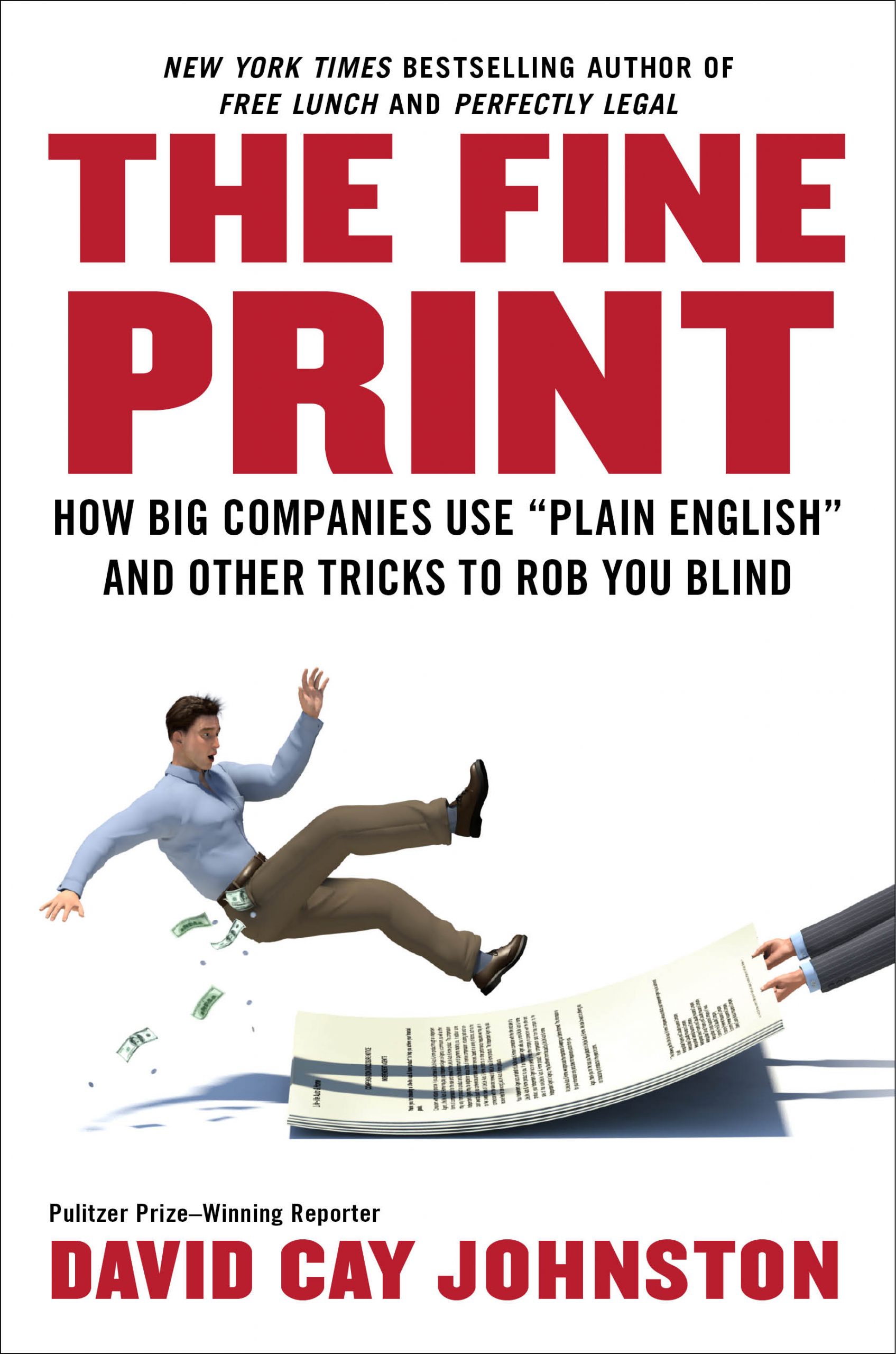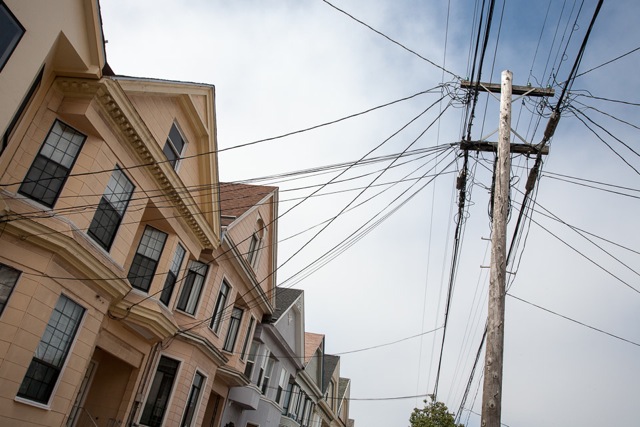The next time you pass a power pole consider this: Pacific Gas & Electric expects that pole to be there until the year 2357 and perhaps until 2785.
The average PG&E pole has just nine years of useful life left, according to PG&E’s sworn testimony asking for more money to speed pole replacement. The utility got money through rate hikes to replace poles on a 50-year cycle, but it has been replacing them on a 346 to 778 year cycle while, by PG&E’s own testimony, diverting that money to other purposes.
The life cycles of power poles are about as mundane as it gets, but that is exactly what PG&E and other corporate-owned utilities count on as they inflate profits by raising rates while deferring replacement of equipment, reducing maintenance and cutting staff.
The result is that you are paying more and more for less reliable utility service. From 2000 to 2011 PG&E electricity prices rose at more than twice the rate of inflation. The Edison Foundation, which represents investor-owned utilities, said in 2006 that utilities were not making enough profit and would require increased rates to improve their systems.
Diversions of money from maintenance and repair risk enormous economic damage. Even a one-second interruption can cause billions of dollars of damage, as studies showed after the 1993 blackout in the Northeast and in Canada’s Ontario province.
Beyond that, not taking care of the system literally puts lives at risk. The deadly failure of a PG&E high-pressure pipeline in San Bruno made that obvious two years ago. The pipeline, laid during the Eisenhower years in what was then an open field, ran under suburban homes, its existence unknown to the San Bruno Fire Department or homeowners. Eight people died, including the state Public Utilities Commission investigator looking into the safety of a PG&E pipeline system that, we now know, is dangerously decrepit.
Paying more for less reliable service while increasing risks to life and limb is part of a much larger story about the remaking of the American economy, a rewriting of laws and rules taking place in plain sight. It is a story the mainstream news media has failed to report.
Quietly, big companies use lawmakers in Sacramento and Washington to rewrite the rules of commerce so they can escape the rigors of competitive markets. Instead of sweeping changes that reporters might actually cover, lobbyists generally keep themselves employed for years by seeking incremental changes, a clause added this year, a regulation revised next year.
The goal is to stay the invisible hand that Adam Smith wrote about in “The Wealth of Nations” in 1776. The invisible hand was Smith’s metaphor for how competition makes economies more efficient and thus improves society as a whole. Thwart the hand of competition and profits rise, but at the price of damaging economic growth and jobs.
Thwarted competition and these new rules explain why Americans pay almost the highest prices in the world for an Internet so slow and balky that it is the equivalent of a two-lane country road, not the Information Superhighway for which Americans have paid at least $360 billion in telephone rate increases so far.
America invented the Internet, but in speed now ranks 29th and falling in the world. Those triple-play packages that cost Americans on average $160 a month including taxes sell for just $38 in France, where the Internet is 10 times faster, free long distance extends to 70 countries instead of just two (U.S. and Canada) and cable television offers global, not just domestic, channels.
Imagine the services and products that would be invented if America only had the Internet we paid for — the big-volume, high-speed digital pathways that are or will soon be universal in countries like Japan, South Korea, Singapore and most of Europe.
As a legal monopoly, PG&E has always been insulated from market forces. As a proxy for the market, California created the Public Utilities Commission. Its duty is to make sure customers pay only what the law calls “just and reasonable” prices while making sure utility owners earn “just and reasonable” profits.
When I covered the commission in the 1970s, as a Los Angeles Times national correspondent based in San Francisco, the commission’s staff looked out for the interests of customers as well as utility companies. The commission included some members not in the industry’s pocket. And the consumer group now called The Utility Reform Network, or TURN, challenged favored treatment for utilities, winning hundreds of millions of dollars in refunds.
But in the name of “deregulation” the Public Utilities Commission staff has been cut and hobbled, while the commission itself became so blatantly pro-industry during the Schwarzenegger years that three of the five commissioners had utility industry backgrounds and acted as guardians of utility interests. News coverage of the commission has shriveled to rewriting press releases.
There is, by the way, no such thing as “deregulation,” which in practice means new regulation written by industry for industry and against consumer interests, as my reporting for The New York Times and other organizations has documented for many years.
The commission became so pro-industry that the staff of one commissioner openly mocked people in Felton, near Santa Cruz, when they complained about price gouging by a corporate water utility. Residents later bought the California-American Water Company system, paying six times the going price just to escape predatory pricing and bad service enabled by the commission.
The public knows little about the ways PG&E benefits from this official bias because mainstream news organizations seldom cover rate cases until after the amount is set. One exception is The Manteca Bulletin, which gave flint-eyed coverage to PG&E’s price gouging and the Public Utilities Commission’s role in helping it pick pockets. Its editor, Dennis Wyatt, even came up with a new definition of what PUC means — “Profits Upkeep Commission.”
In my new book “The Fine Print,”and my 2008 bestseller “Free Lunch,” I show how supposed reforms promoted as using markets to set electricity prices were, from the get-go, a rigged game to raise prices.
In states like California, where traditional utilities that sold power they generated were ordered to divest most of their power plants, the price of electricity rose 48 percent in real terms from 1999 to 2010. In states that kept the old model, prices rose just 9 percent.
California has 1,400 electric power plants, but ownership of these plants is so concentrated that PG&E and five other generating companies can set an artificially high price of electricity virtually all the time, research at Carnegie Mellon University showed.
Despite rigging the rules to inflate prices, PG&E and other utilities have been hollowing out their systems. Money for maintenance and repaid money is siphoned upstream to corporate parents known as holding companies.
Growing risks to utility workers from unsafe conditions are ignored despite union complaints and repeated accidental deaths.
“All the gas utility companies are basically playing the odds” on safety, said Charlie D. Rittenhouse, the top safety expert for the Utility Workers Union of America. “They’ve cut the workforces and cut the workforces and cut the workforces while at the same time keeping the CEOs’ and top executives’ wages going up and up and up. A major concern for our group and many other groups we deal with is that there’s not enough people there to do the work” and do it safely.
Rittenhouse and engineering experts I interviewed all predict more pipeline explosions, like the one that destroyed a whole neighborhood in New Jersey during tropical storm Sandy. They note that aging pipelines run under or past schools, hospitals, offices and, in the case of San Bruno, a tot lot park. Yet most of these pipelines have never been inspected to see how much corrosion has worn through steel walls built to withstand only 1.4 times maximum pressure.
That you already paid enough to finance maintenance and replacement is no barrier to PG&E seeking higher rates, as it is now doing to cover the costs of pipeline upgrades following the San Bruno blast.
Then there’s taxes.
In 2008 through 2010 customers paid PG&E enough money to cover its federal and state corporate income taxes in full, plus the taxes on the profits to pay the taxes, known as “grossing up” the taxes. But instead of an actual grossed-up income tax rate of more than 50 percent, PG&E received refunds, resulting in a real tax rate of negative 21.2 percent, analysis of company disclosures by the Institute for Economic and Tax Policy found.
In 2011 PG&E set aside $440 million for corporate income taxes, but paid just $42 million, its cash flow disclosure statement shows, on $1.3 billion of profit. That is an effective tax rate of just 3 percent.
That means you paid double — covering the maximum possible tax cost for PG&E in your monthly bills and then, as a taxpayer, financing refunds of taxes the company paid in prior years.
The money you paid to PG&E for taxes that have not yet been sent to Washington and Sacramento — and may never get there — costs you about $48 annually. It is, in economic terms, an interest-free loan you are forced to make to PG&E shareholders each year.
That would not be the case if any of three reforms were in place.
One would be to exempt legal monopolies from the income tax, which since 1954 has transferred a half trillion dollars of value from customers to utility owners, a study for the American Public Power Association found. Robert Batinovich, a wealthy real estate developer who looked out for consumers when he was Public Utilities Commission president and who died recently, advocated this reform in 1977. He said it would simplifyrate setting and stop utilities from profiting off taxes.
The second would be to enforce the Raker Act, which in return for letting San Francisco dam the Hetch Hetchy Valley in the Sierras a century ago required public power in San Francisco. Public power is exempt from corporate income tax and overall charges much less.
The third would be to buy out PG&E, as Manteca citizens are trying to do so they can both cut their power costs and improve reliability. The San Francisco Board of Supervisors voted in September to sell CleanPower directly to residents, which could, possibly, have the same effect as a buyout if enough people switch to city power. But PG&E and its allies are sure to fight in court to keep their monopoly profits.
PG&E’s average residential customer now pays $42 a month, or 31 percent, more than the Sacramento Municipal Utility District charges. That is more than $500 per year just in higher electric costs.
More PG&E rate hikes are coming for sure. There is the cost of replacing those high-pressure pipelines laid during the Eisenhower years. Starting in about nine years, power pole failures should increase because half of PG&E’s 2.3 million poles will have exceeded their useful life.
PG&E has stepped up power pole replacement from less than 3,000 poles in 2007 to more than 6,600 last year, spokesman Andrew Souvall said and it bought 10,000 more for nonreplacement work. That’s still far short of the 46,000 replacement poles PG&E testified it needs each year.
By delaying pole replacement, PG&E also increased your costs. The price per pole, PG&E documents show, rose from $9,000 in 2007 to an estimated $13,000 next year, which represents inflation plus $2,600 per pole. That is $6 billion more, just in above-inflation costs, to replace all 2.3 million poles.
That you already paid to take good care of the system will not matter. But going forward, public demands for reform can save money and improve safety.
PG&E will, for sure, want higher rates it gets to make up for its past neglect to become permanent increases, charges that will continue even after the makeup work is finished.
You can minimize that damage. Complain in writing to the Public Utilities Commission. Tell your legislator you want a law requiring PG&E and other corporate utilities to match each dollar they spend seeking higher rates with an equal amount for opponents, as former commission lawyer Patrick J. Power recommends. Write concise letters to the newspapers demanding less news on the Kardashians and more on utility company schemes. Call talk show hosts. Sign up with TURN, Women’s Energy Matters and other consumer advocates.
Reform begins with you.

Adapted from “The Fine Print: How Big Companies Use Plain English to Rob You Blind,” published by Penguin Group. © 2012 by David Cay Johnston.










